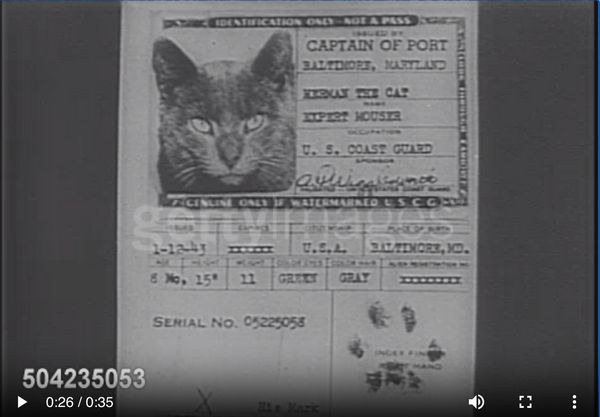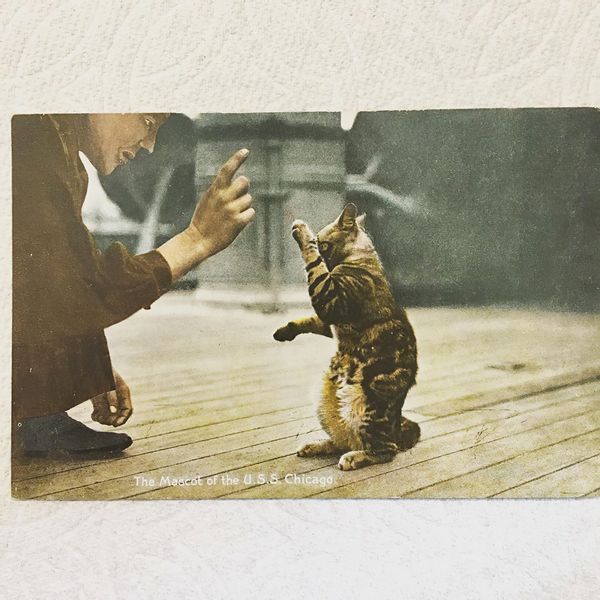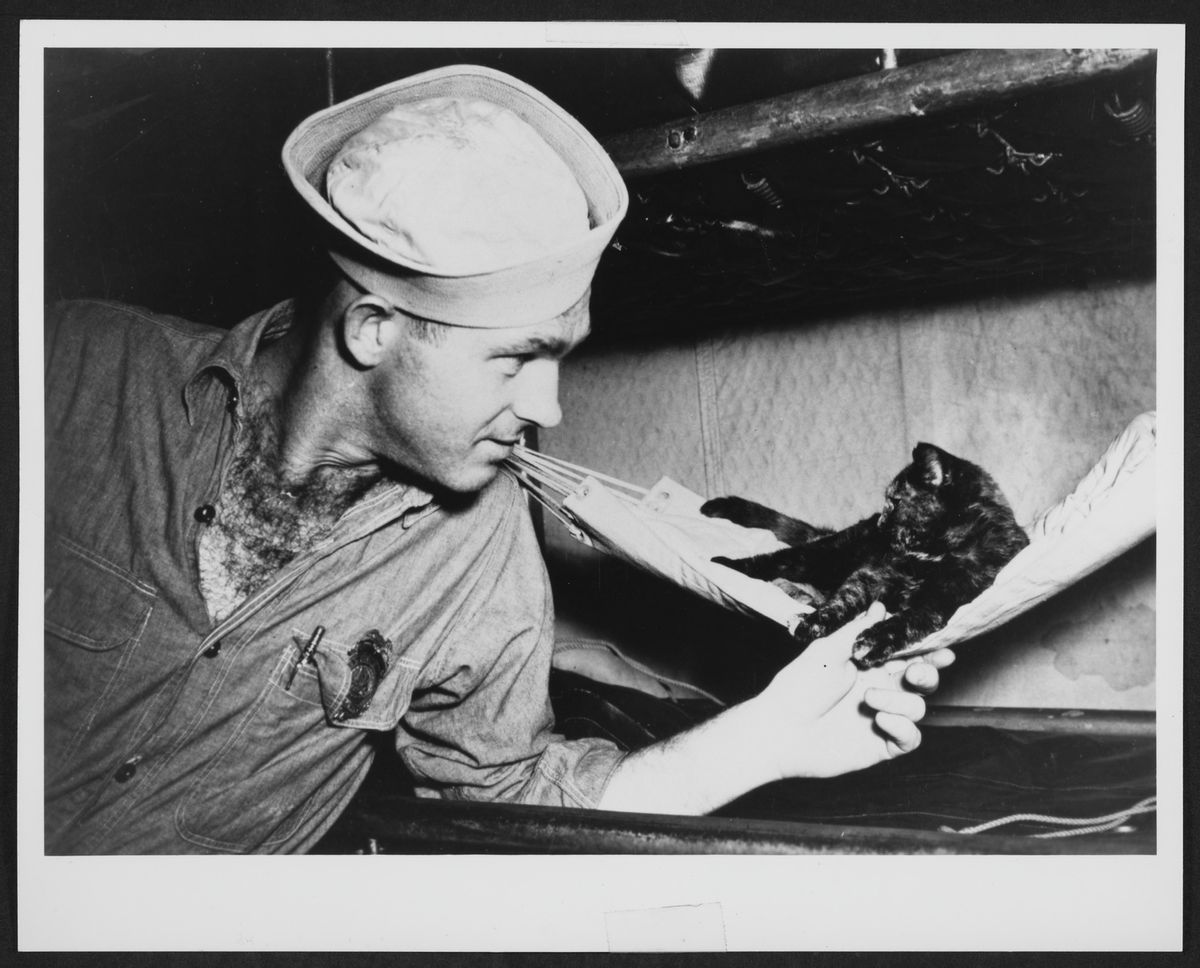“Never trust a sailor on dry land,” says the old adage. Renowned for their tall tales, mariners worldwide must fight to be believed. So if you read about an ancient seafarer talking about cats he met on boats, you might be suspicious. Fear not—cats have been on ships for a very long time.
As early civilization began, mice and rats found themselves particularly well-suited to survive in human-built environments, which contained massive stockpiles of food and plenty of small places to hide from predators. As humanity grew, so too did the mouse and rat population. Not long after, carnivorous cats that naturally preyed on rodents gravitated towards more “urbanized” environments because of their own growing food source. Humans found them useful and kept them around.
As ancient humans began traveling over water, so did the rodents, stowing away on ships, scavenging food and spreading disease. For early navigators, it must have felt quite natural to keep a cat on board as a form of pest control. Scot Christenson, the director of communications at the U.S. Naval Institute and author of the book “Cats in the Navy,” told Snopes in a phone interview that cats on boats are even depicted on murals in ancient Egyptian tombs. Christenson said that other seafarers of antiquity, like the Phoenicians and the Vikings, also used cats on their ships as a form of pest control.
 (Wikimedia Commons)
(Wikimedia Commons)
Between the 16th and 19th centuries, a time historians call the “Age of Sail,” cats became even more of a necessity. Mice and rats continued to ruin food supplies and chew through sails, but if they got into a stockpile of gunpowder, they could leave a flammable trail of powder behind as they scurried about. The ship’s cat played an important role in mitigating that risk.
By the 20th century, ship’s cats were a mainstay in most navies worldwide, and sailors realized that they were useful beyond just pest control. Since cats can detect changes in air pressure, captains and navigators watched the behaviors of their feline companions to predict storms. After the invention of flight, cats also reacted to the high-pitched hum of airplane motors, tipping navies off to incoming airplanes.
A common internet claim tells the story of Herman the Cat, an “expert mouser” hired by the U.S. Coast Guard in Baltimore during World War II, complete with his own passport. While it is true that Herman was a real cat that patrolled the port of Baltimore starting in 1943 (he was even featured in a Paramount newsreel), the passport is a misrepresentation. Herman’s documentation was the standard military identification issued at the time, which was sometimes awarded to cats as a way of boosting morale for the crew and in recognition of their important duties at sea. Their occupations included the aforementioned expert mouser, but also “master-at-naps” and “chief food taster,” Christenson said.
 ("Herman Joins Up" Paramount newsreel screenshot)
("Herman Joins Up" Paramount newsreel screenshot)
Since international travel for animals was (and still is) restricted by quarantine laws to prevent transmission of diseases like rabies, pets do need some documentation to cross an international border. While a historical pet passport once was a collection of medical records rather than a single document, the European Union, for instance, implemented a true pet passport in 2004 that compiles all the required information. We should note ship's cats were historically exempt from these quarantines, however, and could freely travel wherever they pleased. There is even a true story, Christenson notes in his book, about a cat disembarking a ship at one port only to magically reappear at the next port of call. Confused sailors later discovered the cat arrived on a different, faster ship.
Christenson happily confirmed that despite the maritime reputation for tall tales and exaggerations, most of the stories he found about ship’s cats were true. He shared the antics of Bounce, mascot of the USS Chicago. “The soldiers trained him to stand on his back legs and salute with his tiny paws whenever 'The Star-Spangled Banner' was played,” he said. “There’s photographic evidence, too.”
 (U.S. Naval Institute)
(U.S. Naval Institute)
The presence of the ship's cat faded after World War II when quarantine laws were strengthened, meaning a disembarking cat could leave the captain with a hefty fine. Budget cuts led the U.S. Navy to ban pets on ships in the 1950s, and the Royal Navy abandoned the practice in the '70s. Luckily, the rodent population is still under control because of advancements in fumigation. But the storied history of the ship's cat isn't quite over:
“The Russians still use cats ...,” Christenson said.
